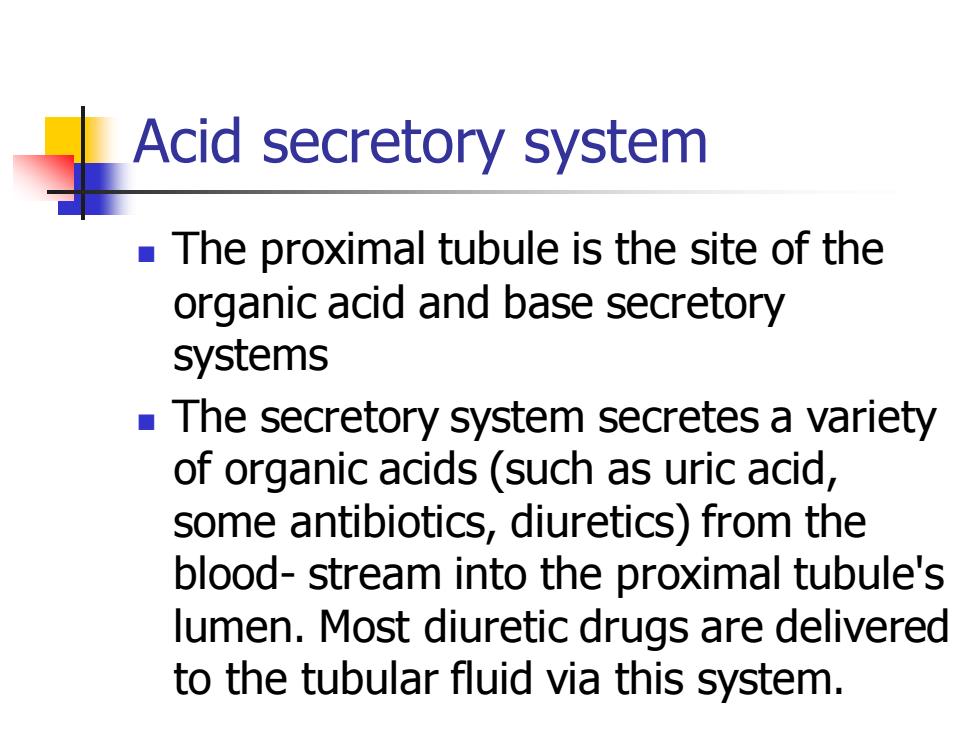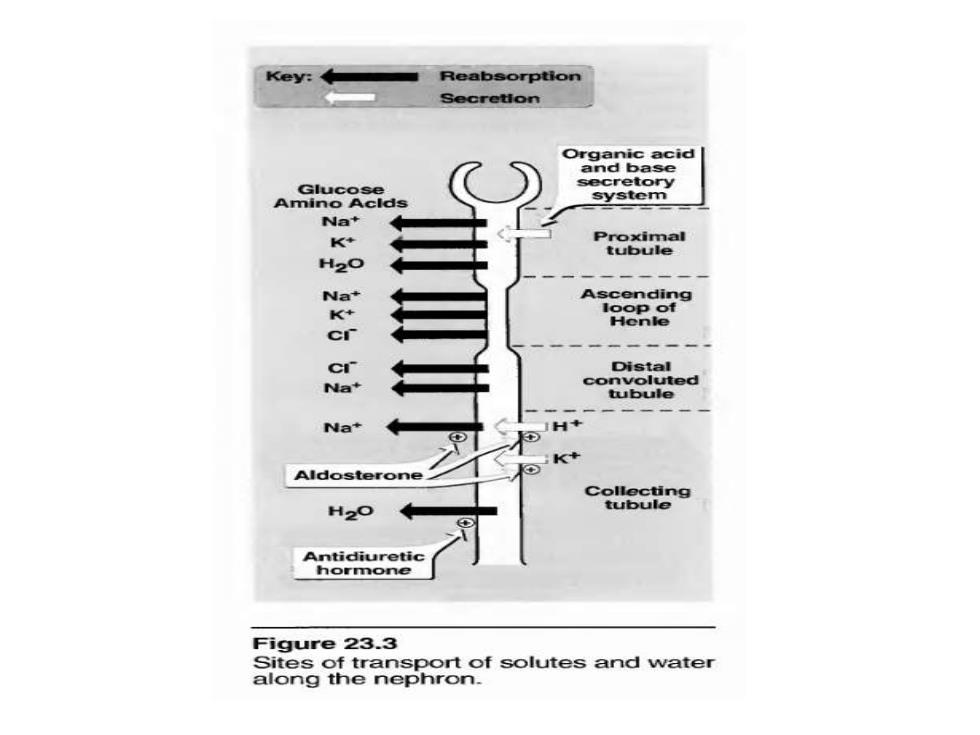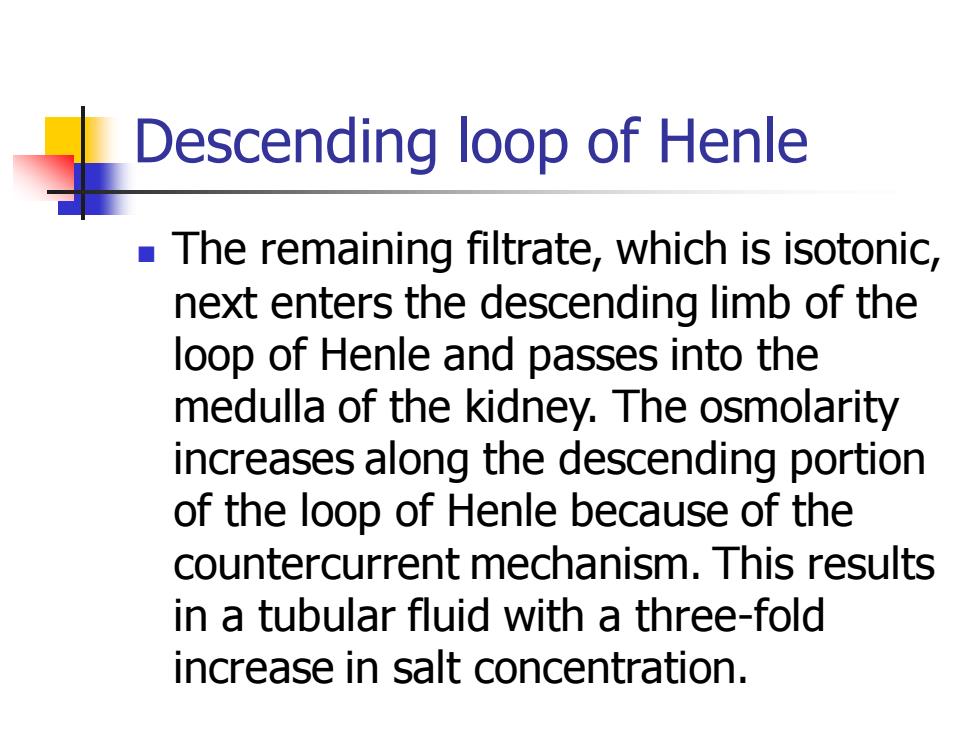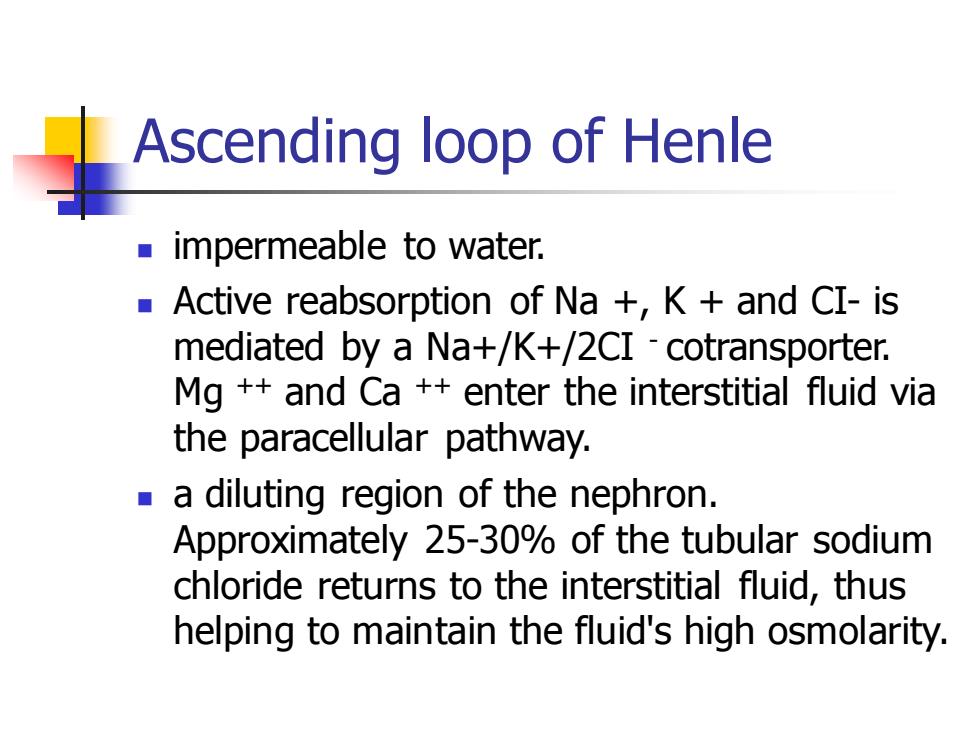
Proximal convoluted tubule almost all of the glucose,bicarbonate, amino acids,and other metabolites are reabsorbed.Approximately two thirds of the Na is also reabsorbed in the proximal tubule;chloride and water follow passively to maintain electrical and osmolar equality
Proximal convoluted tubule ◼ almost all of the glucose, bicarbonate, amino acids, and other metabolites are reabsorbed. Approximately two thirds of the Na + is also reabsorbed in the proximal tubule; chloride and water follow passively to maintain electrical and osmolar equality

Acid secretory system The proximal tubule is the site of the organic acid and base secretory systems The secretory system secretes a variety of organic acids(such as uric acid, some antibiotics,diuretics)from the blood-stream into the proximal tubule's lumen.Most diuretic drugs are delivered to the tubular fluid via this system
Acid secretory system ◼ The proximal tubule is the site of the organic acid and base secretory systems ◼ The secretory system secretes a variety of organic acids (such as uric acid, some antibiotics, diuretics) from the blood- stream into the proximal tubule's lumen. Most diuretic drugs are delivered to the tubular fluid via this system

Key: Reabsorption Secretion Organic acid ind base Glucose etory Amino Aclds Na' K Na cr Distal Na' convoluted tubule Na+ Aldosterone ollecting H20 tubule Antidiuretic hormone Figure 23.3 Sites of transport of solutes and water along the nephron

Descending loop of Henle The remaining filtrate,which is isotonic, next enters the descending limb of the loop of Henle and passes into the medulla of the kidney.The osmolarity increases along the descending portion of the loop of Henle because of the countercurrent mechanism.This results in a tubular fluid with a three-fold increase in salt concentration
Descending loop of Henle ◼ The remaining filtrate, which is isotonic, next enters the descending limb of the loop of Henle and passes into the medulla of the kidney. The osmolarity increases along the descending portion of the loop of Henle because of the countercurrent mechanism. This results in a tubular fluid with a three-fold increase in salt concentration

Ascending loop of Henle impermeable to water. Active reabsorption of Na +K and CI-is mediated by a Na+/K+/2CI-cotransporter. Mg +and Ca +enter the interstitial fluid via the paracellular pathway. a diluting region of the nephron. Approximately 25-30%of the tubular sodium chloride returns to the interstitial fluid,thus helping to maintain the fluid's high osmolarity
Ascending loop of Henle ◼ impermeable to water. ◼ Active reabsorption of Na +, K + and CI- is mediated by a Na+/K+/2CI - cotransporter. Mg ++ and Ca ++ enter the interstitial fluid via the paracellular pathway. ◼ a diluting region of the nephron. Approximately 25-30% of the tubular sodium chloride returns to the interstitial fluid, thus helping to maintain the fluid's high osmolarity